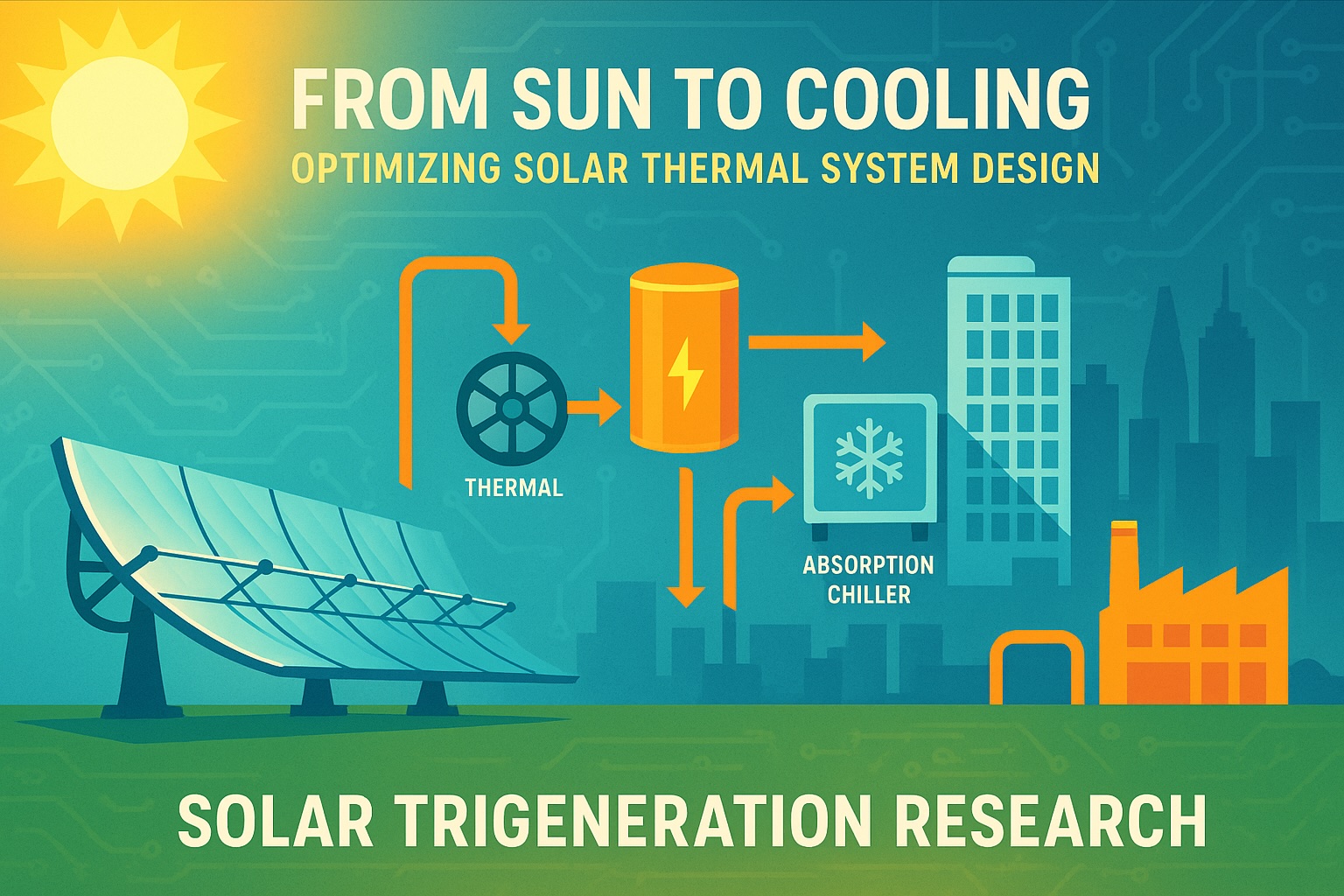From Sun to Cooling: Advancing Solar Thermal System Design with Integrated Simulation and Optimization
Semester or Master Thesis Project
Fall 2025
Context
As industries and urban districts seek to decarbonize their energy supply, solar thermal technologies, particularly parabolic trough collectors (PTCs), offer a promising solution for delivering medium- and high-temperature heat. This high-grade thermal energy can be used not only for direct heating and electricity generation via Organic Rankine Cycles (ORCs), but also to drive thermally activated cooling technologies such as absorption chillers. The ability to cover cooling demands with renewable heat is particularly relevant in sectors with significant refrigeration or process cooling needs, and in densely populated urban areas facing growing cooling demand due to climate change.
Effective integration of solar thermal systems into such multi-energy environments requires accurate modeling tools. However, optimization methods like Mixed-Integer Linear Programming (MILP), while powerful for system design and operation planning, often rely on oversimplified assumptions regarding solar field performance and thermal energy storage (TES). This project aims to improve the accuracy of MILP-based models by integrating detailed simulation data from the System Advisor Model (SAM), a high-fidelity tool developed by NREL. The goal is to enhance the accuracy of solar heat supply modeling in the context of trigeneration systems, simultaneously delivering heating, cooling, and power, while keeping the optimization framework computationally efficient and generalizable.

Project/Tasks
Task 1: Familiarization and Review
- Review literature on solar thermal system modeling and MILP optimization.
- Study the modeling assumptions in SAM and existing MILP frameworks.
Task 2: Model Integration
- Extract and process simulation data from SAM for a selected PTC system.
- Compare SAM outputs with MILP assumptions.
Task 3: Model Adjustment and Testing
- Develop correction factors to align MILP assumptions with SAM results.
- Test the impact of corrections on system design and operation using LINGO or Python-based MILP models.
Task 4: Evaluation and Communication
- Analyze the impact of modeling assumptions on system sizing and performance.
- Document findings and present the final results in a well-structured report.
Skills
- Basic understanding of energy systems and thermodynamics.
- Familiarity with optimization methods (linear programming, MILP) and AMPL or LINGO.
- Programming experience in Python is a plus, particularly in data handling (e.g. Pandas) and visualisation (e.g. Plotly, Seaborn).
- Analytical skills to interpret simulation and optimization outputs.
- Ability to work independently and structure a technical report.
Administrative
The project will be supervised by Dr. Eduardo Pina (postdoc, IPESE). Interested candidates should submit a CV and a brief motivation letter to eduardo.pina@epfl.ch.